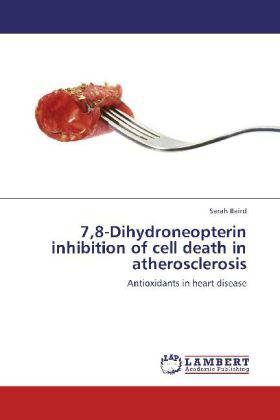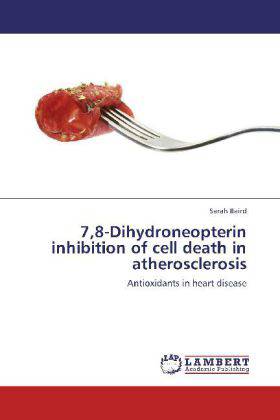
- Afhalen na 1 uur in een winkel met voorraad
- Gratis thuislevering in België vanaf € 30
- Ruim aanbod met 7 miljoen producten
- Afhalen na 1 uur in een winkel met voorraad
- Gratis thuislevering in België vanaf € 30
- Ruim aanbod met 7 miljoen producten
Zoeken
7,8-Dihydroneopterin inhibition of cell death in atherosclerosis
Antioxidants in heart disease
Sarah Baird
Paperback | Engels
€ 101,45
+ 202 punten
Omschrijving
The death of macrophages is important in the development of atherosclerosis, leading to the growth of the lipid core of the plaque. Cell death is due principally to the toxicity of oxidised LDL. However, cells may have a protective mechanism in the production of antioxidant 7,8-dihydroneopterin (78NP). THP-1 and U937 monocytes and macrophages were incubated with AAPH or oxidised LDL and loss of cell viability, total reduced thiols and cell death characteristics measured. Upon addition of 78NP, viability loss was decreased in the U937 cells only. The protective effect of 78NP may be dependent on its ability to inhibit thiol loss. All cell types produced 78NP after stimulation with IFN . However, inclusion of IFN did not prevent cell viability loss during exposure to oxLDL. 78NP is able to protect cells from viability loss generated by oxLDL in some circumstances. However, the evidence presented does not support the hypothesis that 78NP would be able to protect macrophages from cell death in the plaque. This work should be useful to those interested in the development of atherosclerosis and the contribution to its progression of macrophages, free radicals and oxidative stress.
Specificaties
Betrokkenen
- Auteur(s):
- Uitgeverij:
Inhoud
- Aantal bladzijden:
- 420
- Taal:
- Engels
Eigenschappen
- Productcode (EAN):
- 9783659264290
- Verschijningsdatum:
- 15/11/2012
- Uitvoering:
- Paperback
- Afmetingen:
- 150 mm x 220 mm
- Gewicht:
- 612 g

Alleen bij Standaard Boekhandel
+ 202 punten op je klantenkaart van Standaard Boekhandel
Beoordelingen
We publiceren alleen reviews die voldoen aan de voorwaarden voor reviews. Bekijk onze voorwaarden voor reviews.








